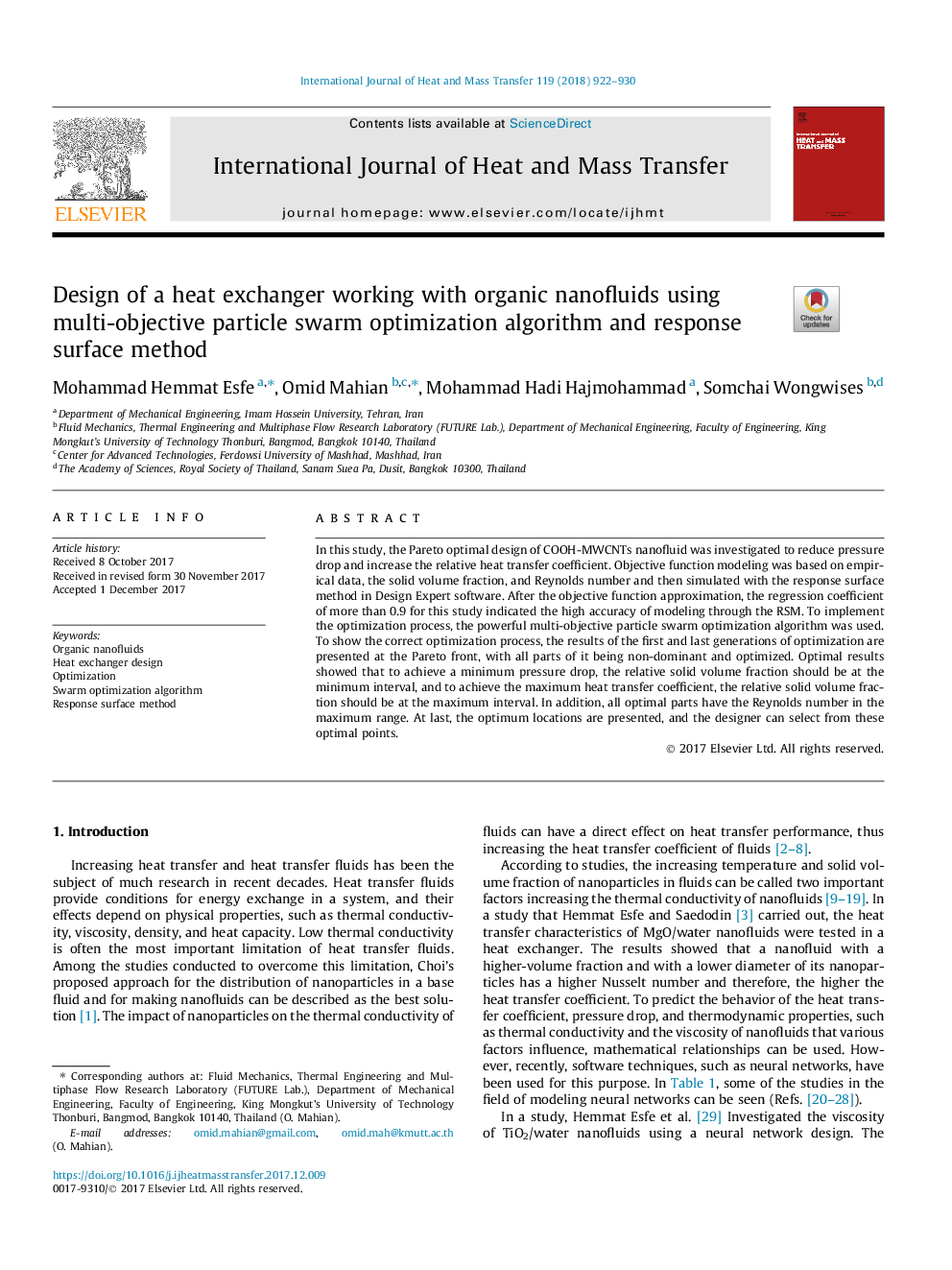| کد مقاله | کد نشریه | سال انتشار | مقاله انگلیسی | نسخه تمام متن |
|---|---|---|---|---|
| 7054772 | 1458021 | 2018 | 9 صفحه PDF | دانلود رایگان |
عنوان انگلیسی مقاله ISI
Design of a heat exchanger working with organic nanofluids using multi-objective particle swarm optimization algorithm and response surface method
ترجمه فارسی عنوان
طراحی مبدل حرارتی با نانوفیلد های آلی با استفاده از الگوریتم بهینه سازی ذرات چند منظوره و روش سطح پاسخ
دانلود مقاله + سفارش ترجمه
دانلود مقاله ISI انگلیسی
رایگان برای ایرانیان
کلمات کلیدی
موضوعات مرتبط
مهندسی و علوم پایه
مهندسی شیمی
جریان سیال و فرایندهای انتقال
چکیده انگلیسی
In this study, the Pareto optimal design of COOH-MWCNTs nanofluid was investigated to reduce pressure drop and increase the relative heat transfer coefficient. Objective function modeling was based on empirical data, the solid volume fraction, and Reynolds number and then simulated with the response surface method in Design Expert software. After the objective function approximation, the regression coefficient of more than 0.9 for this study indicated the high accuracy of modeling through the RSM. To implement the optimization process, the powerful multi-objective particle swarm optimization algorithm was used. To show the correct optimization process, the results of the first and last generations of optimization are presented at the Pareto front, with all parts of it being non-dominant and optimized. Optimal results showed that to achieve a minimum pressure drop, the relative solid volume fraction should be at the minimum interval, and to achieve the maximum heat transfer coefficient, the relative solid volume fraction should be at the maximum interval. In addition, all optimal parts have the Reynolds number in the maximum range. At last, the optimum locations are presented, and the designer can select from these optimal points.
ناشر
Database: Elsevier - ScienceDirect (ساینس دایرکت)
Journal: International Journal of Heat and Mass Transfer - Volume 119, April 2018, Pages 922-930
Journal: International Journal of Heat and Mass Transfer - Volume 119, April 2018, Pages 922-930
نویسندگان
Mohammad Hemmat Esfe, Omid Mahian, Mohammad Hadi Hajmohammad, Somchai Wongwises,
